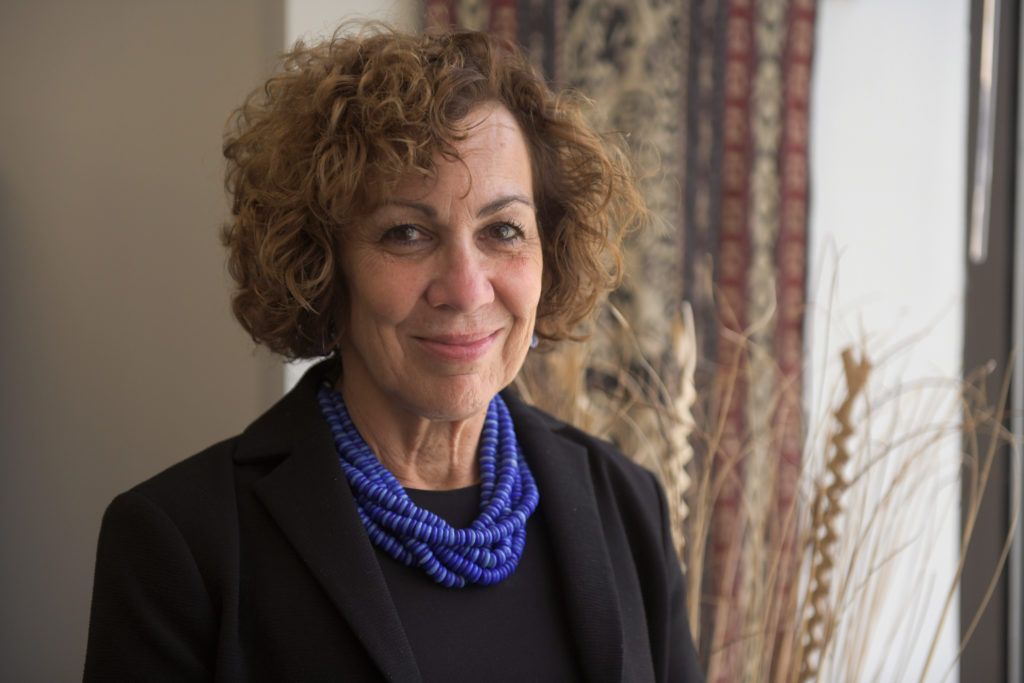Leaders in the School of Nursing want to show faculty how they can incorporate real-life health care simulations into their lesson plans.
Officials plan to roll out a series of new simulation programs this year through the GW Nursing Simulation Initiatives, which launched late last month. Officials said the programs will help faculty from across the world better teach students how to work with mannequins and live patient actors, who can provide students with real-life experiences in the nursing field.
“When we create this safe, non-threatening environment and immerse students in a simulation, it replicates a real clinical environment – it’s safe, they’re not going to harm patients,” nursing school Dean Pamela Jeffries said.
Jeffries said the initiative launched after the nursing school’s second annual simulation conference in late March. She said most of the programs will be headquartered on the Virginia Science and Technology Campus, where the nursing school’s flagship building recently added 12 private exam rooms and two acute care rooms.
The school will offer two types of simulation training – “immersions” and “intensives,” according to the nursing school’s website. Immersion sessions will start in July and include “best practices” for directors of simulation centers, technicians and teachers, while intensive programs will launch in the fall and feature lessons on including simulations in curricula and incorporating simulations across professions.
The cost of participating in the immersion programs ranges from $1,600 to $6,500, and each of the sessions listed spans five days, according to the nursing school’s website. The cost of the intensive programs, which each last two days, is not yet listed.
Jeffries said participants will learn how to properly oversee students working with mannequins, control rooms and cameras – items commonly found in simulation labs for nursing and medical students. She said individual sessions have not been capped, but certain sessions might be limited to about 25 people because of space concerns.
She said faculty leading the simulation sessions will rate participants’ performance based on topics like how professionally they interact with the mannequins or live patient actors. Participants will receive the opportunity to observe how their peers interact with patients in the simulation, which will help them learn how to best care for patients in their future careers, she said.
“People build these sim centers all over the place for safe experiential learning, and many times people don’t know what they’re doing – this is the problem,” she said. “Our purpose is to help faculty and simulation specialists.”
She said participants will take electronic surveys after completing simulation programs to evaluate which aspects of the initiative are successful. She said the surveys will also help determine whether new technologies and materials, like virtual reality simulations, should be added.
Jeffries said at least five faculty members were involved in creating the simulation training, including Sabrina Beroz, the associate director of programs and initiatives in the nursing school and an advanced Society for Simulation in Health Care certified health care simulation educator.
Beroz said nursing professors must be well-versed in simulation technology and teaching methods to ensure nursing students receive the best education in patient care.
“The learners are immersed in a safe environment which is experiential and collaborative,” she said in an email. “The ultimate aim of simulation is safe competent care enhancing patient outcomes.”
Of GW’s 12 peer schools, 11 feature nursing programs, all of which offer simulation training for students in nursing or medicine, and at least three offer training specifically for faculty and simulation administrators.
Cynthia Foronda, an associate professor of clinical at the University of Miami’s School of Nursing and Health Sciences, said faculty need hands-on training to ensure that students feel “psychologically safe” and do not feel threatened or anxious when they are working with actors or mannequins.
“Simulation can be an awesome learning experience, or it can be a really negative experience,” she said. “I’ve seen it go both ways, but we now have an established science in simulation – one that is evidence-based with best practices that faculty can use, so as the science continues to grow, just as any other science, faculty need to stay apprised with the latest evidence.”
Alice Blazeck, an assistant professor and the vice chair for administration in acute and tertiary care for the University of Pittsburgh’s School of Nursing, said the nursing school’s intensive training on debriefing – where students receive feedback from their professors about their performance in simulations – is the “most important” session offered because faculty help students recognize and learn from their errors.
“Students often make significant mistakes, and what you want to do in the debriefing is have the student realize where the flaw was in their decision-making so that one, they don’t become defensive and just figure, ‘Well, this was simulation,’ and two, they can take that forward and not make the same mistakes again,” she said.





